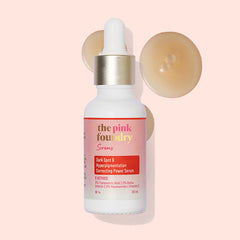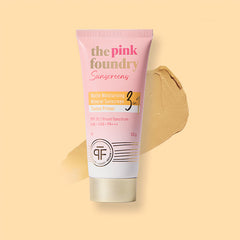How Are Pimples Formed On Your Face?
Remember the first pimple that showed up on your face during your teenage years? Well, your teenage years might be way behind you, but pimples haven’t stopped coming back. And they continue to be as annoying and frustrating as your first one. But have you ever wondered how are pimples formed? Check out this article to gather some details regarding it:
What causes pimples?
It is a fact that pimples are a major skin woe. But how are pimples formed on face? Some reasons are listed below:
- Hormonal changes: Fluctuating levels of hormones in the body often make your skin produce more oil than usual. As this excess oil blocks your pores, it triggers acne breakouts.
- Excess oil production: At times, the sebaceous glands of your skin produce oil in excess. This overflowing oil can combine with dirt and dead cells to clog the pores.
- Bacterial buildup: Bacteria might infect a buildup of dirt, sebum, and dead cells. It can contribute to inflammation and contribute to the formation of pus-filled pimples.
- Genetics: You might have a higher risk of pimples if your biological parents have them.
The Science Behind Pimple Formation
Now that you know about the possible causes let us dig into the scientific explanation behind the formation of a pimple:
Understanding the role of sebaceous glands and hair follicles
The tiny sebaceous glands beneath your skin produce a waxy or oily substance called sebum. This substance is essential for lubricating the skin. When the skin produces sebum in excess, it gets combined with dirt and dead cells. This accumulation of oil, dirt, and dead cells will clog the pores or hair follicles of your skin.
As the pores get clogged, it triggers inflammation. At times, this inflammation might be accompanied by pain and swelling. You can notice redness around a pimple.
How bacteria and dead skin cells contribute to pimple formation
When dead cells and sebum come together to form a pimple, it triggers the growth of undesirable bacteria. Under the right conditions, Propionibacterium acnes harmlessly exists on the skin. But this slow-growing bacteria can feed off the excess sebum and reproduce faster.
It triggers inflammation and causes spots on the skin. It’s important to understand that pimples from bacterial infections are not contagious.
Different Types of Pimples
Now that you know how pimples form on the face, let us get into details about the different types of pimples:
- Whiteheads: Whiteheads are a result of skin cells, bacteria, and oil combining to create a white tip. While a whitehead seems similar to a small pimple, its surrounding area won’t appear red and inflamed.
- Blackheads: Like whiteheads, blackheads are also non-inflammatory. Blackheads appear when the plug clogging the pore appears on top of the skin. You should know that blackheads are not dirt stuck within the pores.
- Pustules and papules: If pus accumulates on top of the clogged pore, the pimple can be classified as a pustule or papule. The surrounding area of the infected area might appear red, sensitive, and inflamed.
Also read: Different Types of Pimples & Treatments for it
A guide to tackling acne
After learning how do pimples form, you can embrace some of these products to tackle the issue:
- Clean your face: Use the Clearing & Calming Acne Face Wash to get rid of all impurities from your face. It will reduce excess sebum and make your skin cleaner. The gel face wash will control oil production and shed off dead cells. This face wash will cure existing breakouts and also prevent future ones.
- Moisturise your face: Your skin often starts producing more sebum because of excessive dryness. The Acne Care & Healing Gel Moisturiser with Tea Tree & Cica will provide adequate levels of hydration to your skin. It will keep sebum production in check, and all pores will remain unclogged. This lightweight formulation will speed up the acne-healing process and enhance your skin texture.
- Use a spot corrector: When you need instant relief from pimples, you can apply the Overnight Acne Spot Corrector. The spot treatment formula works on blackheads, whiteheads, and all breakouts. If you directly apply this product to your pimples, it will shrink the size of the breakouts overnight.
Conclusion
Once you understand how do zits form, you will realise that effective skincare products can help you tackle them effectively. The Pink Foundry has introduced skincare products that can control sebum production and keep pimples at bay. So, get hold of the best acne-care products now.
FAQs:
-
How can I stop pimples from appearing on my face?
You can stop pimples from surfacing on your face by embracing a proper skincare regimen. Looking after your diet and stress levels also has an influential role in preventing the issue of acne breakouts.
-
Can blackheads and whiteheads be considered pimples?
Blackheads and whiteheads are a type of non-inflammatory acne. While they don’t cause inflammation, they occur as a result of clogged pores.
-
Should I exfoliate if I have pimples on my face?
Exfoliation can help get rid of dead cells that combine with excess sebum to form pimples. But you should be using a gentle exfoliant that does not irritate your skin. Moreover, you should exfoliate for a maximum of two times a week. The Overnight Exfoliating AHA BHA Radiance Mask is what you need to gently exfoliate dead cells from your skin and keep pimples at bay.










